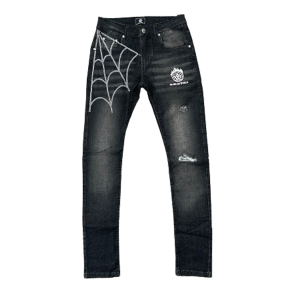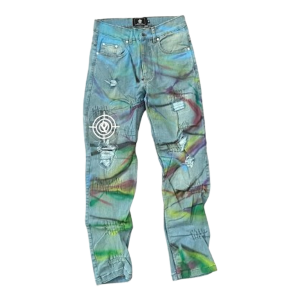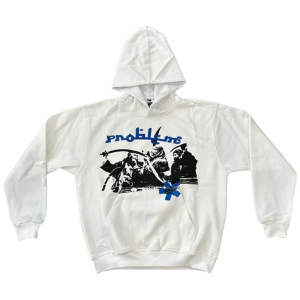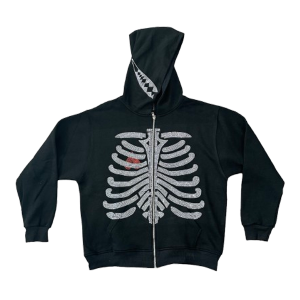Have you ever stopped to think about where the things we buy on a daily basis come from? As Americans, we always think that “made in the USA” is always “ethically made.” We believe that sweatshops only exist in developing countries. But that is not true. Sweatshops are still alive and well in the U.S. today!
Although some of us may choose not to acknowledge it, workers are often mistreated by business owners who prioritize profit over fundamental human rights, leaving employees underpaid and without proper safety measures. It’s hard to believe that something like this could happen in our own backyard, but unfortunately, it is an all-too-common reality.
So join us as we explore the harsh truth behind American sweatshops and work together towards solutions for creating a better workplace for everyone!
What Are Sweatshops?
First, let’s discuss “what is meant by sweatshops.
The U.S. Department of Labor defines sweatshops as any garment or footwear facility violating more than one labor law and not adhering to the basic standards for a safe, healthy working environment for their employees. Such violations include:
- Occurrences of child labor
- Minimum wage and overtime violation
- Unsafe working conditions
- Lack of worker benefits
According to the U.S. Department of Labor, these facilities often ignore laws set in place by governments to keep the cost of production low. In Los Angeles, California, there are surprisingly many sweatshops. An estimated 50,000 garment workers, mainly women and immigrants, are employed in these factories.
Shockingly, the Department of Labor found that 85% of these workplaces were violating labor laws. The workers in these sweatshops are paid a subminimum wage and are frequently overworked and even abused. It’s a sad reality that needs to be addressed and improved upon.
Overview of Piece per Rate
It’s hard to comprehend how garment workers in Los Angeles can be paid so poorly despite California’s minimum wage laws. It’s because they often earn a piece rate (which means they get paid per item or task completed) instead of an hourly wage.
While this system could theoretically lead to greater productivity and higher wages, the reality is that garment workers only receive $5.15 an hour when the minimum wage is set at $12, and sometimes even lower in certain counties. They also frequently work 12 hours daily and up to 70 hours weekly. Clearly, this abysmal situation needs to be addressed and improved.
Making matters even worse, many of these garment workers can’t even speak up for themselves since they don’t know English. It’s estimated that 50% of them are undocumented, so they lack the protection of any legal rights.
A documentary called “Made in America” was created by Remake, a sustainable fashion platform, to bring light to this issue. A worker interviewed for the documentary reported she was making just $125 a week, far less than their counterparts. But she couldn’t communicate with them and didn’t realize it for a long time.
So, it is clear that this is an injustice that needs to be addressed and remedied.
How the Garment Worker Protection Act Can Help
In February 2020, Senator María Elena Durazo introduced the Garment Worker Protection Act. If passed, this bill would end the piece rate system and hold clothing retailers accountable for garment workers’ wages.
Today, California regulations contain a loophole that allows brands such as Forever 21 and Fashion Nova to distance themselves from liability for their worker’s wages and benefits. The act intends to close this loophole by making retailers responsible for all workers in the supply chain.
The Garment Worker Center, a workers’ rights organization striving to end sweatshops in Los Angeles, is sponsoring this bill. Moreover, garment workers are leading the movement to get it passed.

Opposition to the Garment Worker Protection Act
There is disagreement about a bill called the Garment Worker Protection Act. Some companies and lawyers representing brands like Forever 21, Alibaba, and Fashion Nova, don’t like the bill and oppose it.
The California Chamber of Commerce thinks the bill will cause job loss. The main concern is that to compete with other countries, the cost of making clothes, including workers’ pay, has to stay low. However, the current working conditions for California garment workers are not good, and they might even lose their jobs if the bill becomes law.
The problem is that nothing is perfect. Not doing anything is bad, but passing the bill might also be bad.
We need a worldwide agreement that protects workers and the environment. Other countries can offer cheap labor because they pay workers very little or no and don’t care about the environment or factory safety. A worldwide agreement would help make things fair and stop jobs from moving to other countries.
Some fashion brands support the Garment Worker Protection Act because they make clothes ethically and want everyone else to do the same. Fast fashion is cheap because workers are treated badly. If workers are treated better, prices will go up, and people will buy less fast fashion. This could create more demand for ethical fashion.
What We Can Do to Control and Eliminate Sweatshops in the USA
Sweatshops in the U.S. are a wide-reaching problem that is often overlooked when it comes to discussions about the fashion industry, labor rights, and fair wages.
There are several steps that can be taken to tackle this issue and eventually eliminate sweatshops in the United States.
By Passing Worker Protection Laws
One of the most effective solutions is legislation. By passing laws like The Garment Worker Protection Act, which holds clothing retailers accountable for garment worker wages and eliminates the piece rate system. This way, workers will be paid fairly and more protected against exploitation.
Create Policies That Promote Better Working Conditions
It is essential to lobby legislators and businesses to create policies that promote better working conditions across all industries, not just the fashion industry.
Educating Consumers on Ethical Fashion Practices
It is another way to stop sweatshops. Individuals can make more informed decisions about what brands and companies they should support based on their labor practices and avoid those with questionable labor standards.
Supporting Worker Rights Organizations Financially
We must continue to empower worker rights organizations like the Garment Worker Center in Los Angeles, which advocates for fairer wages and better working conditions for garment workers. Supporting these organizations financially or donating time as volunteers are some of the positive actions we can take toward eliminating sweatshops in the U.S.

-
Rhinestone Spider Denim
$80.00 -
Graffiti Target Denim
$80.00 -
Bullseye T-Shirt
$40.00 -
Arabic problems hoodie
$65.00 -
Skeleton Rhinestone Zip Up
$65.00 -
OG Heart Shirt
$40.00 -
Problem$ Shirt
$40.00 -
Divine Angel Shirt
$40.00
Conclusion
While it’s easy to turn a blind eye to the problem of sweatshops in the United States, the fact is that they still exist. Thousands of workers are forced to work long hours for little pay in unsafe conditions. But there is hope! By raising awareness and supporting organizations that help garment workers, we can make a difference.
The next time you go shopping, take a moment to think about where your clothes come from and how they were made. Maybe even do a little research into the brands you buy to see if they have a history of using Sweatshop labor. You have the power to make a difference – use it!











